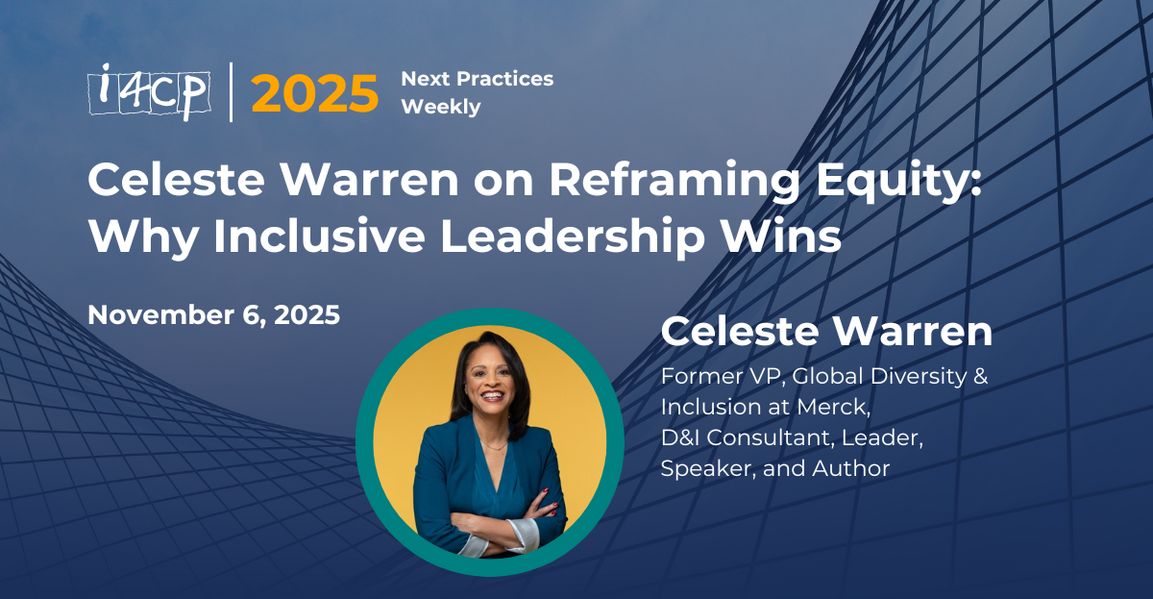Workplace Flexibility in the Next Normal
March 25, 2021
March 25, 2021
This month's focus was on the many aspects of flexible work, a major part of the new i4cp study From Cube to Cloud™. The survey for this study is open until April 14, 2021 -- we highly encourage all HR leaders to do the 15-20 minute survey. In addition to sharing your voice and input to this important work, you'll also be sent the aggregate data soon after we close the survey.
The meeting was facilitated by i4cp CEO and Co-Founder Kevin Oakes and Senior Research Analyst Tom Stone, and led to a rich conversation with the following as some of the highlights:
- We asked participants the following poll question: "As part of your organization’s post-pandemic planning, how will decisions be made about who will work onsite, remotely, or hybrid?" A majority indicated that either decisions will be "Mostly dictated by organizational policies, with allowance for exceptions" or "Mostly determined by individual collaboration between worker and manager within organizational policies". Only a few responded with the more stringent "Fully dictated by organizational policies" or the very loose "Completely determined by individual collaboration between worker and manager."
- The consensus was that allowing some level of flexibility/discretion for employees and managers is important, but can be problematic if it opens the door to team, department, or division decisions being made based on the personal preference of the leader, and not what is best for the organization. Some amount of prescriptive guidance to managers on what is appropriate (and what is not) would help curtail this.
- Regarding factors that will influence onsite work guidelines, the type of work that needs to get done (and the availability or not of required technology) is the most obvious and sets a baseline: some work simply must be done at the office, factory, retail store, etc. Beyond that, many said that key factors are collaboration requirements, needs/preferences of customers, and the ability to maintain the organization's culture.
- "What is the office for?" is a key question to (re)consider. One participant said "Collaboration and Celebration… what else?" Several noted onboarding is also a value of having an office, and others said some training initiatives benefit from being in-person.
- When asked about what the primary objectives of having a flexible work policy are, talent attraction and retention were clearly top of mind because they are so related to employee preference, and ultimately, the employee experience. On participant also noted that they can provide better service to customers because they can broaden the hours of availability, and several noted the positive impact on sustainability given the reductions in corporate footprint, building energy use, and of course commute time.
- There are concerns with flexible work, specifically remote/hybrid options. One participant asked whether building up professional networks (internally) can suffer, and if so what impact will this have on development, mentoring, etc.? Many said that yes this is an issue, but shared what they are doing to counteract the effect: leveraging chat technologies more widely and intentionally, using a mentoring platform to enable such relationships, and continuing to offer frequent development opportunities.
- Some of the other concerns with flexible work arrangements included tech equity issues, organization culture challenges, leadership skills, compensation and taxation issues for employees in different locations, onboarding new employees, mental health concerns, reduced visibility to leadership, etc.
- As for updating employee benefits in relation to flexible work, several participants agreed that more focus is needed on childcare assistance -- ranging from onsite, stipends, resources, etc. (see our article "Rosie Could Rivet Because She Had Affordable Childcare")




